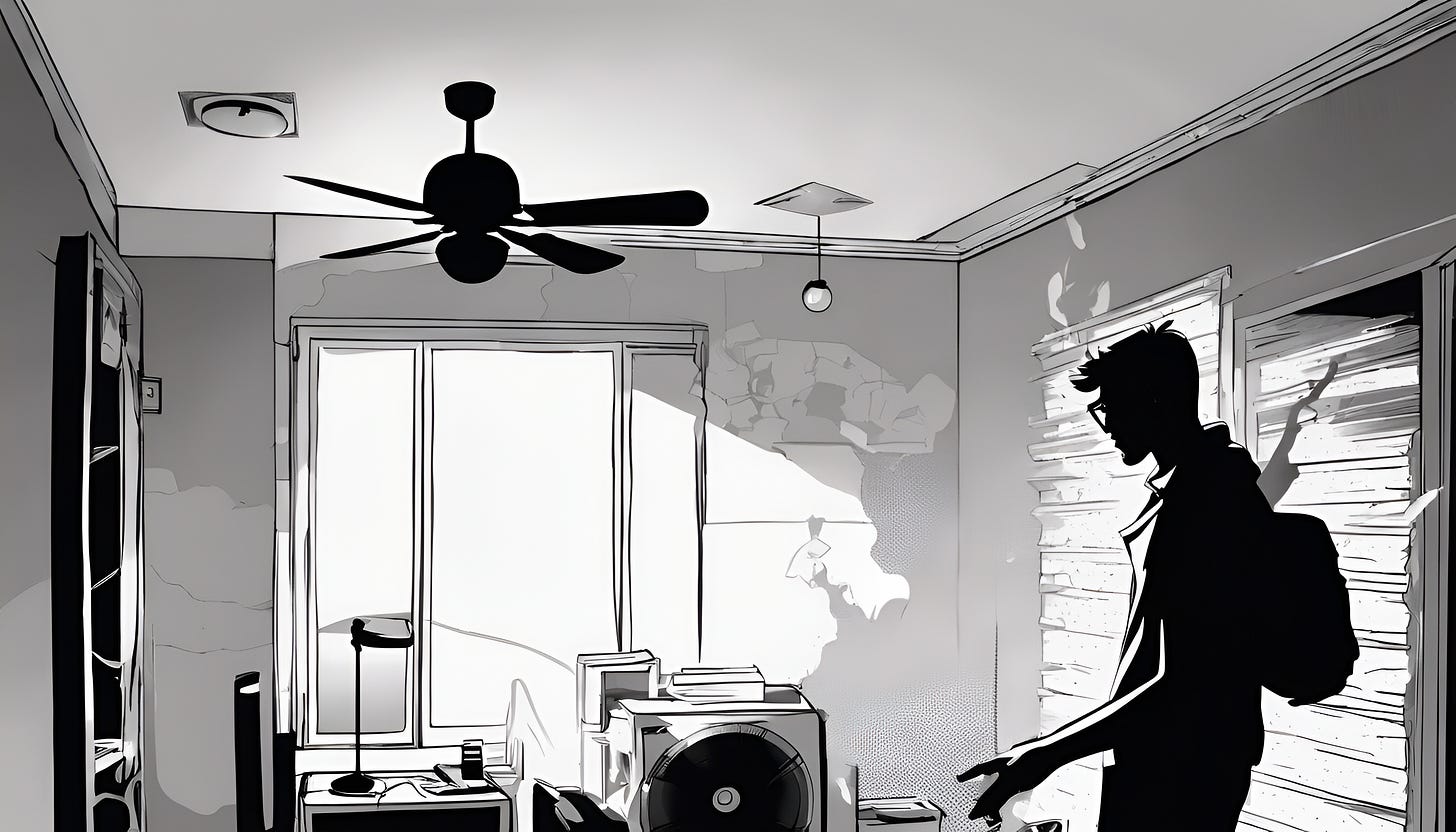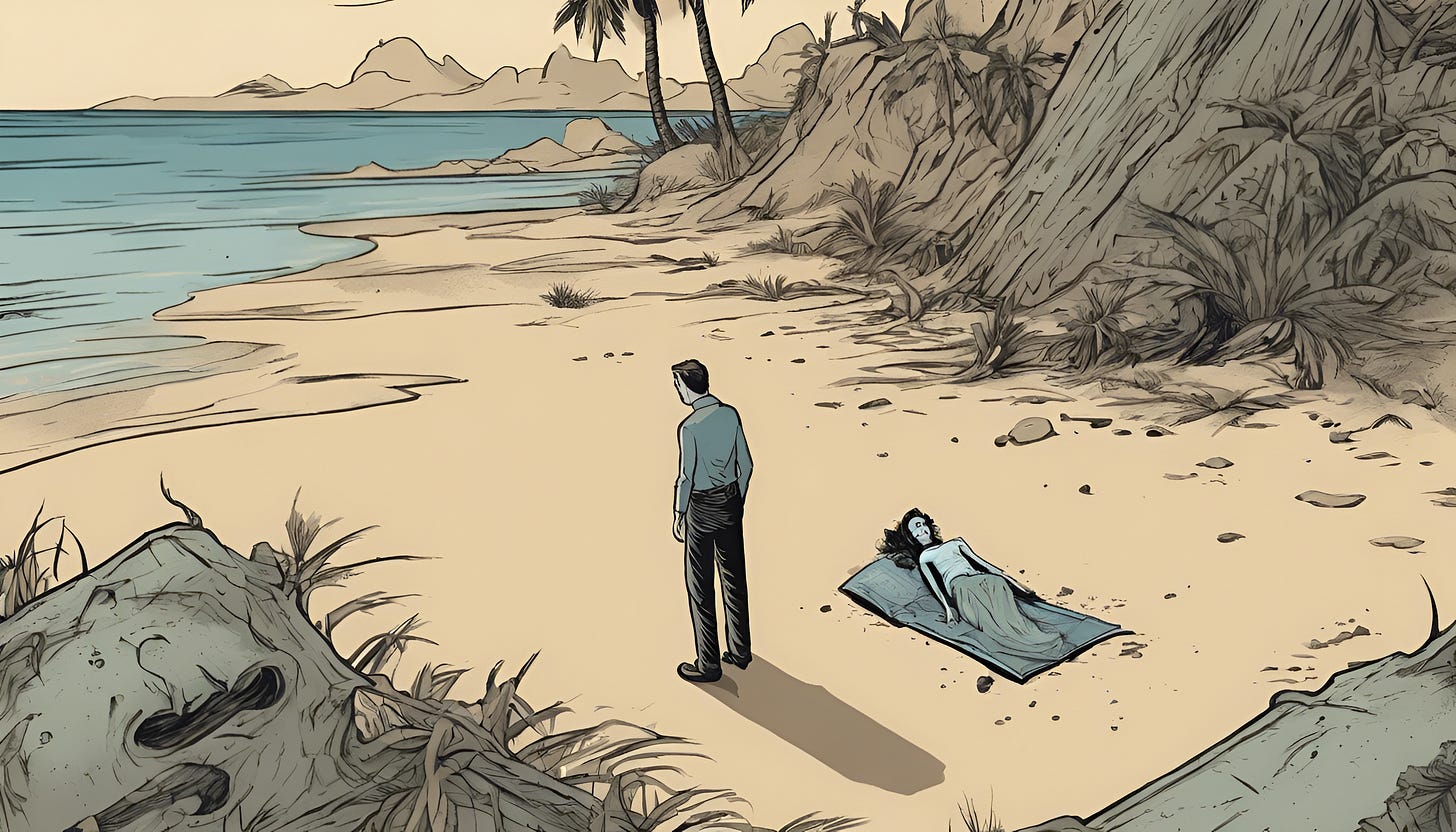There is a gentle friend of mine who was claiming to be badass. I challenged him. ‘You are a poetic soul,’ I told him. ‘You are kind of person who puts flowers in his hair. Bliss for you is the fragrance of fresh hyacinths at dawn, with lyres playing in the background. I refuse to believe you have ever been badass, even though you once went to engineering college. Prove me wrong! Tell me a badass story!’
He took a deep breath, and said that he was an asshole when he was young, and had once ragged someone.
‘Lol. Boss, ragging is just bad, it’s not badass.’
‘It wasn’t run-of-the-mill ragging,’ he said. ‘And I’m ashamed of it today. But here’s what I did.’
So our friend, who wishes to go unnamed and we will call W from now on, was in an engineering college hostel, and would hang out with two pals I will refer to as A and S. There was another chap in the hostel who was ‘the kind of misfit young people like to pick on.’ So W, along with A and S, duly picked on him.
It escalated and it escalated, till one day the normal ragging procedures no longer seemed enough. So our three friends, all of them geeks, hatched a plan.
They got a kilogram of sugar. They ground it down. They beat it and crushed it and mauled it and may even have sat on it till it was a smooth white powder. They carefully transported this smooth white powder to our victim’s empty hostel room. They broke into it. They had a ladder with them. They used the ladder to climb up to the fan. With the artistry of Michelangelo painting the Sistine Chapel, with the precision of Christian Barnard performing a heart transplant, they covered the top part of the blades with this white powder — and not one grain fell to the floor. It was remarkable engineering.
Then they took away the ladder and locked the room again. Everything was as it had been.
The idea of the prank was that once our victim switched on his fan, the white sugar powder would cover everything. Now, there is one further detail you must know about that hostel: it was famous for its red ants. There were ‘trillions of them.’ They liked sugar. And they liked to bite. In fact, you could say that it was their dharma to bite.
Our victim returned to his room, presumably after a class that he sincerely attended. He switched on the fan. Catastrophe unfolded.
Our victim complained to the warden, and insisted on making a police complaint. To buttress his case, he argued that the white powdery substance was cocaine. And while there was no CCTV footage of the culprits — this was 40 years ago — it was obvious to him that it could only be three people who combined such viciousness with the requisite imagination and geekery to pull it off.
It did not strike the warden that, given the price of cocaine, the opportunity cost of wasting a kilogram of cocaine was high — you could probably buy half of Powai with it. He filed the police complaint.
The cops summoned our friends to the police station. They were made to wait on a wooden bench outside for an hour. Then they were asked to come in. They sat opposite a bored inspector who took 10 minutes to silently read the FIR. Then he turned to W and asked:
‘What was that white substance?’
‘Sugar powder.’
‘Get out.’
And so the matter ended.
The Frontal Cortex is the Asshole
When my friend recounts this story, it is with sadness. ‘We were such assholes in those days. Today, looking back, I see someone who was lonely and fragile, and we should have gone out of our way to help him. Instead we went out of our way to hurt him. We were such assholes.’
I nodded when he told me this, transported to the strange young man who looks back on me when I look at pictures from the past. I don’t like who I was, even if I never ragged anyone by inflicting sugar on them.
Much as we were sometimes perpetrators of badness, we were also victims of biology — and I mean this as explanation, not exculpation.
One modern classic that you must read is Behave by Robert Sapolsky. The sixth chapter in that is titled ‘Adolescence; or, Dude, Where’s My Frontal Cortex?’ In that, Sapolsky writes:
One fact dominates this chapter. Chapter 5 did in the dogma that adult brains are set in stone. Another dogma was that brains are pretty much wired up early in childhood—after all, by age two, brains are already about 85 percent of adult volume. But the developmental trajectory is much slower than that. This chapter’s key fact is that the final brain region to fully mature (in terms of synapse number, myelination, and metabolism) is the frontal cortex, not going fully online until the midtwenties.
This has two screamingly important implications. First, no part of the adult brain is more shaped by adolescence than the frontal cortex. Second, nothing about adolescence can be understood outside the context of delayed frontocortical maturation. If by adolescence limbic, autonomic, and endocrine systems are going full blast while the frontal cortex is still working out the assembly instructions, we’ve just explained why adolescents are so frustrating, great, asinine, impulsive, inspiring, destructive, self-destructive, selfless, selfish, impossible, and world changing. Think about this—adolescence and early adulthood are the times when someone is most likely to kill, be killed, leave home forever, invent an art form, help overthrow a dictator, ethnically cleanse a village, devote themselves to the needy, become addicted, marry outside their group, transform physics, have hideous fashion taste, break their neck recreationally, commit their life to God, mug an old lady, or be convinced that all of history has converged to make this moment the most consequential, the most fraught with peril and promise, the most demanding that they get involved and make a difference. In other words, it’s the time of life of maximal risk taking, novelty seeking, and affiliation with peers. All because of that immature frontal cortex.
In other words, parts of our brains are fully developed — but the part we need to be a responsible adult isn’t. And so many young people, especially men, tend to be assholes when they are young. (Many of them remain that way and join Twitter to shit on others without consequence.)
Our three friends in the story above are all exceptional well-known people today. I have met only W — whose name doesn’t start with W, but who reminds some of us of Walter White — and he’s one of the kindest, gentlest people I know. The other two are giants in their field. We change with time — and character is contingent.
W turns to me after telling me this story and says:
‘Youth is wasted on the young.’
I reply:
‘Wisdom is wasted on the old.’
Desert Island Hunger
Have we really changed in the ways that matter? One theory of change is that the prefrontal cortex finishes its development, we become mature, we achieve thehraav, we learn how to live in society.
Another theory is that no, we just learn not to act out. We remain selfish sociopaths, but become skilled at putting a veneer on it, even for ourselves. Deep inside, we remain one circumstance away from the banality of evil.
I have a thought experiment I like to inflict on my friends. Imagine that you are stranded on a desert island with one companion. The days go by. You are not rescued, but surely you will be at some point. Food runs out. Hunger sets in.
If the only way to live is to kill and eat the other person, will you?
One standard answer I sometimes get is No, I will never be able to do that. I’d rather die.
But it’s easy to say that now. When you’re hungry, and your one wild and precious life is about to slip away, what will you do?
Your answer may well be I am rational and I will do all I can to survive.
If you say this, I have a further question for you: When will you kill and eat the other person?
After all, if you are cold and rational about this, the other person may be as well. In that case, surely they will get you before you get them. So you have to preempt that — and they have to preempt your preempting. And so on in a vicious cycle of cold, rational thought, until it becomes game-theoretically optimal that the moment you are stranded on the desert island, long before you run out of food, you must begin a fight to the death.
I guess Lord of the Flies is about just this side of human nature — though that stars schoolboys, who haven’t yet learnt to mask their primal instincts with the hypocritical mask of adulthood.
Glory in a Dehydrated Pea
I want to end this post on a cheerful note, but I can’t find one. Instead, since we were talking about our inner sociopath, let me stay on the subject and serve up a poem about cats.
THE CATS
by Ann IversonTo find such glory in a dehydrated pea
on the tile between the stove and fridge.
To toss the needs of others aside
when you simply aren't in the mood for affection.
To find yourselves so irresistible.
And always in a small spot of sun,
you sprawl and spread out the pleasure of yourselves
never fretting, never wanting to go back
to erase your few decisions.
To find yourself so remarkable
all the day long.
We should all be cats; or we should all be dogs. To be human is hard.
***
Illlustrations by Simahina.
***







I used to read India uncut, when I used to blog on blogger more than 15+ years ago.
I was young then.
I am not old yet, nor do have enough wisdom yet.
Bumped into India Uncut a few weeks ago here on substack, which I strongly believe is a great example of better product, new business model and a differentiated distribution.
Totally enjoyed this post..
Hope you don't mind me leaving a music recommendation here
https://music.youtube.com/playlist?list=OLAK5uy_klHiJIRMSA1owomX7fy84jFNQr5pwSbhI&si=ij9fU42Rvzy_gaQq